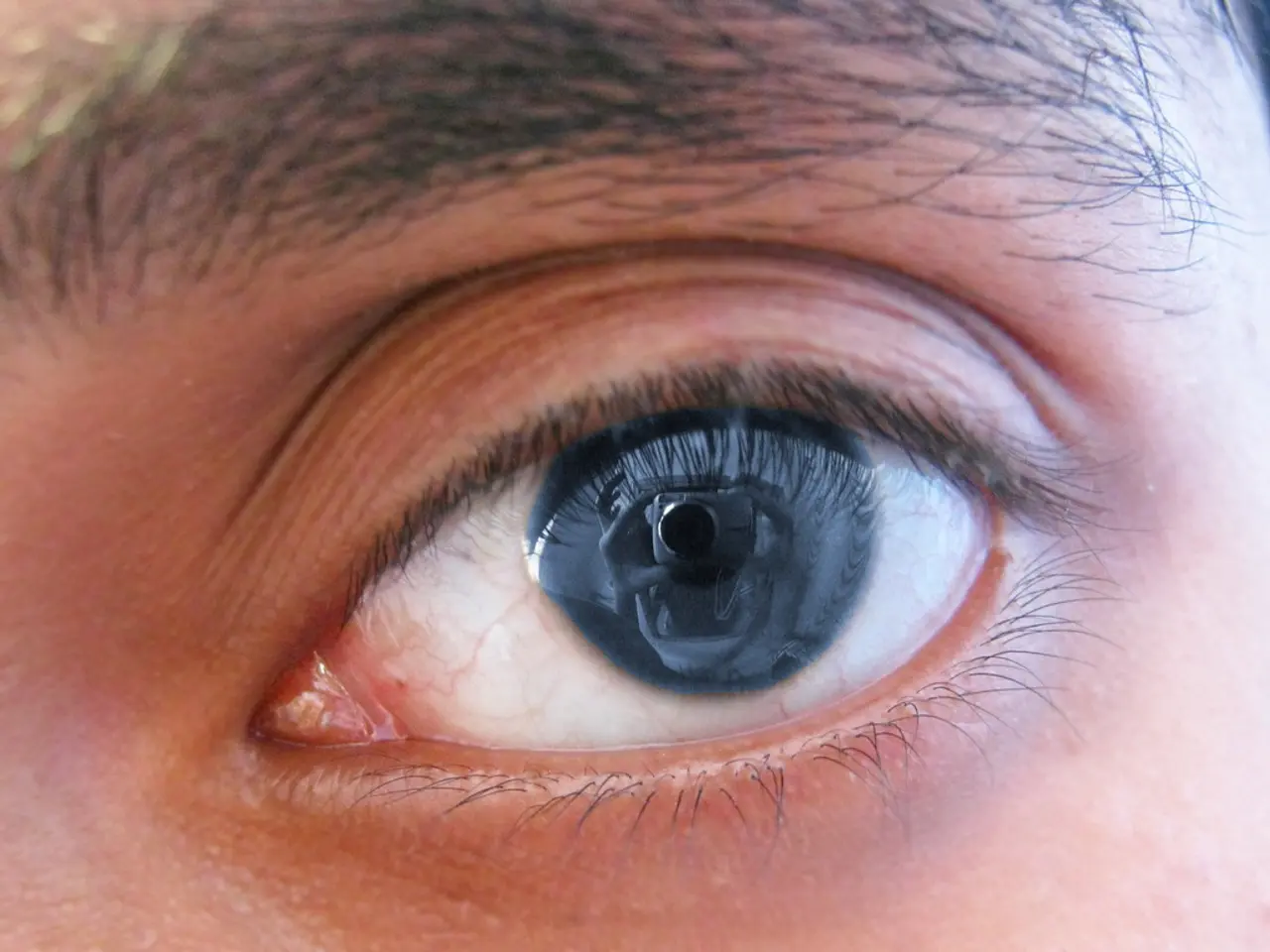Optic Nerve Glioma: Signs, Roots, Prognosis, and Further Information
In a significant number of cases, children with Neurofibromatosis Type 1 (NF1) may develop a condition known as optic nerve glioma. This slow-growing, non-cancerous tumour affects the glial cells of the optic nerve.
Optic nerve gliomas can present with a variety of symptoms, including visual impairment such as blurred vision, visual field loss, and headaches. In some cases, the most common sign, proptosis (eyes appearing to protrude slightly from the head), might be observed. Interestingly, these gliomas can be asymptomatic initially, making regular check-ups crucial for early detection [1][3].
When it comes to diagnosis, MRI scans are typically used to identify thickening or a mass along the optic nerve or optic pathway [3]. A comprehensive eye examination is also essential to detect changes inside the eye and to confirm the presence of NF1.
Treatment for optic nerve gliomas in NF1 children is often individualized due to the tumours' variable behaviour. Many gliomas remain stable and may be monitored closely with regular imaging and ophthalmologic evaluations. However, when treatment is necessary—for instance, in cases of progressive vision loss or tumour growth—options include chemotherapy as the first-line treatment, especially to preserve vision. Surgery is generally avoided due to the risks to vision and difficulty in complete tumour resection, while radiotherapy is usually avoided in young children due to long-term side effects [1][3][5].
It's worth noting that treatment typically resolves any vision problems as the pressure on the optic nerve releases when the tumour shrinks, allowing it to regain typical function. Additionally, MRI and CT scans are used to look for structural abnormalities around the optic nerve.
Optic nerve gliomas account for only 5% of all childhood brain tumours. While around half of people with optic nerve glioma may lose some of their vision, total blindness is rare, occurring in only 5% of cases.
In conclusion, optic gliomas in NF1 have variable behaviour, and treatment is individualized and frequently conservative unless symptoms worsen. A multidisciplinary approach involving oncologists, neurologists, and ophthalmologists is crucial for optimal management and follow-up.
References: - Dayton Children’s Hospital on NF1 symptoms including optic glioma [1]. - Medality (MRI Online) discusses imaging and diagnosis of optic nerve glioma in NF1 [3]. - Pediatric oncology literature noting treatment strategies including chemotherapy predominance and surgical considerations [5].
Pfizer, known for its contributions to medical-conditions and health-and-wellness, could potentially research neurological disorders like those associated with Neurofibromatosis Type 1 (NF1). This research could focus on developing new treatment methods, or improving existing ones, for optic nerve gliomas, the slow-growing, non-cancerous tumours that can affect children with NF1. Such treatment could help manage the disease and mitigate its effects, including the potential vision loss and other medical-conditions related to the gliomas. This development could contribute significantly to the well-being and quality of life for children afflicted with these conditions.




